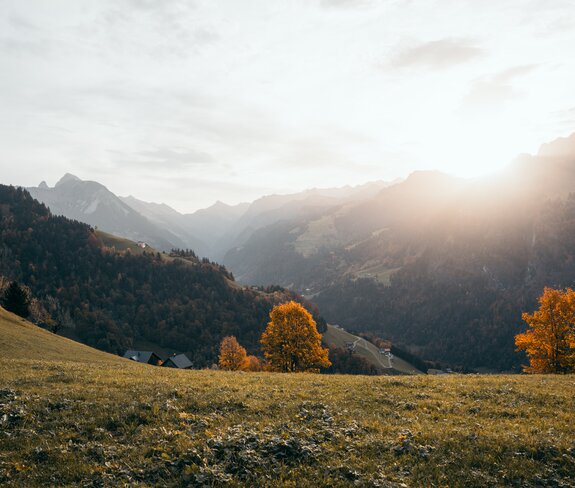
The "Walserherbst" - a feast for all the senses
Where nature and culture meet
Every two years, a very special festival takes place in the Großes Walsertal with the "steepest cultural festival". It combines art, music, theater, literature and culinary delights in the midst of the impressive alpine landscape of the biosphere reserve. Since its inception, "Walserherbst" has established itself as a unique festival that not only celebrates cultural diversity, but also focuses on respectful interaction with nature and regional traditions. An interview with founder and festival director Dietmar Nigsch.
What makes the Walserherbst festival so special?
It's a festival in a vast landscape, an entire valley becomes a stage for three weeks. For me, the preparations for it are about sensing the time we live in - this results in a program of diversity. As part of the event, we give empty and meaningless spaces and objects a new value and fill them with new stories. Creating public spaces is a socio-cultural necessity for me. Of course, a festival should also appeal to all the senses, which is why the program is so diverse.
How did the idea for such an event come about and how does the festival relate to the venue, the Großes Walsertal?
There has always been a connection to Großes Walsertal, even just because I grew up there. Later, I swapped the rural area for the urban one, which gave me two sources of inspiration that complement and enrich my cultural work in the valley. The actual impetus to bring this biennial festival to the valley was the designation of the Großes Walsertal as a UNESCO Biosphere Reserve in 2000. The opportunities this created to shape a special living space culturally were and still are exciting for me.
The Walserherbst is known for its unusual events. Which ones have been particularly memorable so far or have had a lasting effect in the region?
Walserherbst can definitely be seen as an impulse festival. In addition to countless temporary spaces, some permanent projects have also been created. These include the Blumenegg cultural space in Thüringerberg, the Labom nature space in Raggal, the Lutzschwefelbad and the Messnerstall in Buchboden, the lake stage at Seewaldsee in Fontanella and the revitalization of four historic Walserhaus cellar rooms in Blons.
Who is the festival's target audience?
In the beginning, it was mainly the approximately 3480 people living in the valley. Today, Walserherbst attracts almost as many visitors as there are residents in the Großes Walsertal. A festival with such a wide range of artistic disciplines offers something for all age groups.
In your opinion, how important are art and culture in the region?
Art in rural areas is sometimes unsettling, like everything that is new. But the closer art is to the people, the stronger it is. It creates spaces that allow for new ideas. Diversity instead of simplicity! For me, cultural work is also always a socio-political debate in the respective living space.

